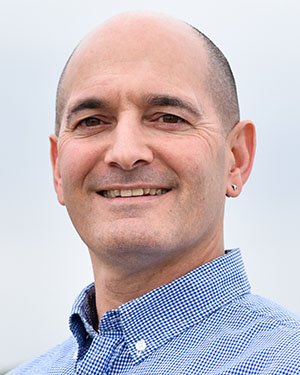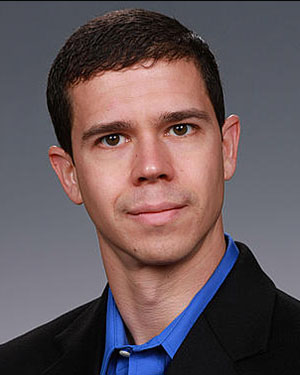Changing of the Guard for ARM Aerosol Value-Added Products
Published: 24 June 2019
Connor Flynn moves out of data translator role, and John Shilling comes in

For 20 years, Connor Flynn of Pacific Northwest National Laboratory (PNNL) in Richland, Washington, has served as the Aerosol Working Group translator for the Atmospheric Radiation Measurement (ARM) user facility. He has been a liaison between ARM infrastructure staff and the scientific community while leading the development of value-added products (VAPs) from instruments that measure properties of aerosols (tiny particles in the air).
At the end of June 2019, Flynn will take a new research position at the University of Oklahoma, transferring the translator position to PNNL’s John Shilling. Until June 28, they will serve together as co-translators.

Through his two decades of service as an ARM translator, Flynn has helped develop many aerosol-related VAPs, including retrievals of aerosol optical depth (MFRSR AOD), bulk and intensive aerosol optical properties (AIP, AOP), and the current Aerosol Best Estimate (AEROSOLBE). Such higher-order data products use existing ARM datastreams as input to algorithms or models that ease scientists’ use of ARM data in atmospheric research and global climate models.
Flynn has also played a similar aerosol translating role for the U.S. Department of Energy’s Atmospheric System Research (ASR) program. He has worked with ASR as a charter member of the Aerosol Measurement Science Group.
During his tenure at PNNL, Flynn has also served as the mentor for numerous ARM instruments, including:
- the micropulse lidar (MPL) and its polarized version, used to determine cloud altitude and detect atmospheric aerosols
- cloud detection ceilometers (CEIL), which measure cloud height, vertical visibility, and aerosol backscatter signals
- near-infrared, visible, and ultraviolet spectrometers (AERI, ASSIST, SWS, SASHE, SASZE), which measure downwelling radiance and irradiance from the Earth’s atmosphere and can identify trace gases and suspended matter, such as aerosols, water droplets, and ice crystals
- airborne instruments, such as the nephelometer (NEPHELOMETER-AIR), which measures aerosol backscattering, and the particle soot absorption photometer (PSAP-AIR), which measures how aerosols change light transmission.
Flynn will continue supporting ARM as an instrument mentor while focusing on specialized instruments for aerosol research in Oklahoma, including occasional testing at ARM’s Southern Great Plains (SGP) atmospheric observatory.
Shilling has worked with ARM for a decade as an atmospheric chemist. He has extensive experience in aerosol chemistry and aerosol microphysical measurements, both in the field and in the lab. He has deployed the Aerodyne aerosol mass spectrometer (AMS) and a proton transfer reaction mass spectrometer (PTR-MS) on ARM’s now-retired Gulfstream-159 (G-1) research aircraft during several field campaigns, including the 2016 Holistic Interactions of Shallow Clouds, Aerosols, and Land-Ecosystems (HI-SCALE) campaign at the SGP.
Shilling is responsible for designing, building, and operating PNNL’s state-of-the-art environmental chamber, which is used to investigate the chemical, microphysical, and cloud nucleating properties of secondary organic aerosols.
Like Flynn, Shilling is dedicated to continuing ARM’s tradition of ensuring that aerosol VAPs are developed in direct response to the needs of the scientific community. ARM Technical Director Jim Mather notes that VAPs arise in two ways: bubbling up organically from scientists who see a need during their research, and as a result of ARM staff pointing out data deficiencies that suggest new higher-level products are required.
In addition to welcoming Shilling into his expanded role, ARM managers thank Flynn for his long service in helping to improve ARM’s instruments and science products and are pleased that he will continue working with ARM through his mentor role.
Keep up with the Atmospheric Observer
Updates on ARM news, events, and opportunities delivered to your inbox
ARM User Profile
ARM welcomes users from all institutions and nations. A free ARM user account is needed to access ARM data.


















